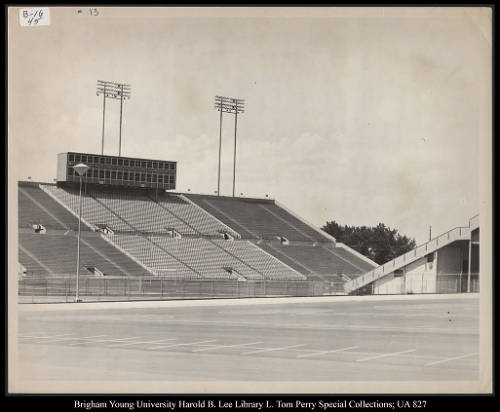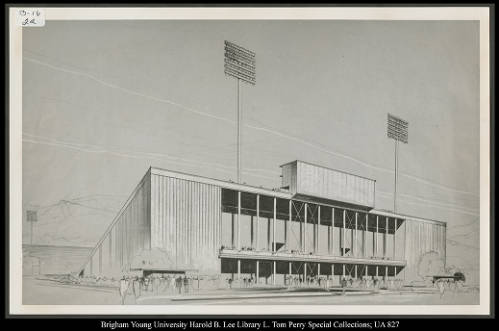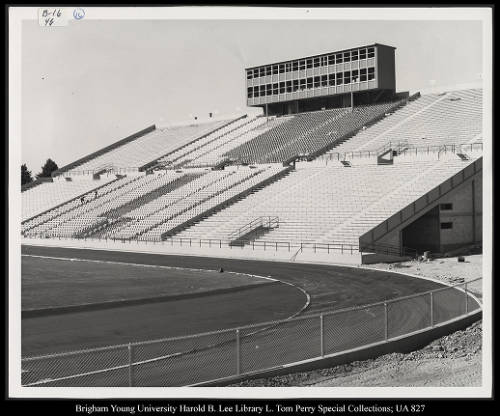By Anna Bryner and Elisa Huhem
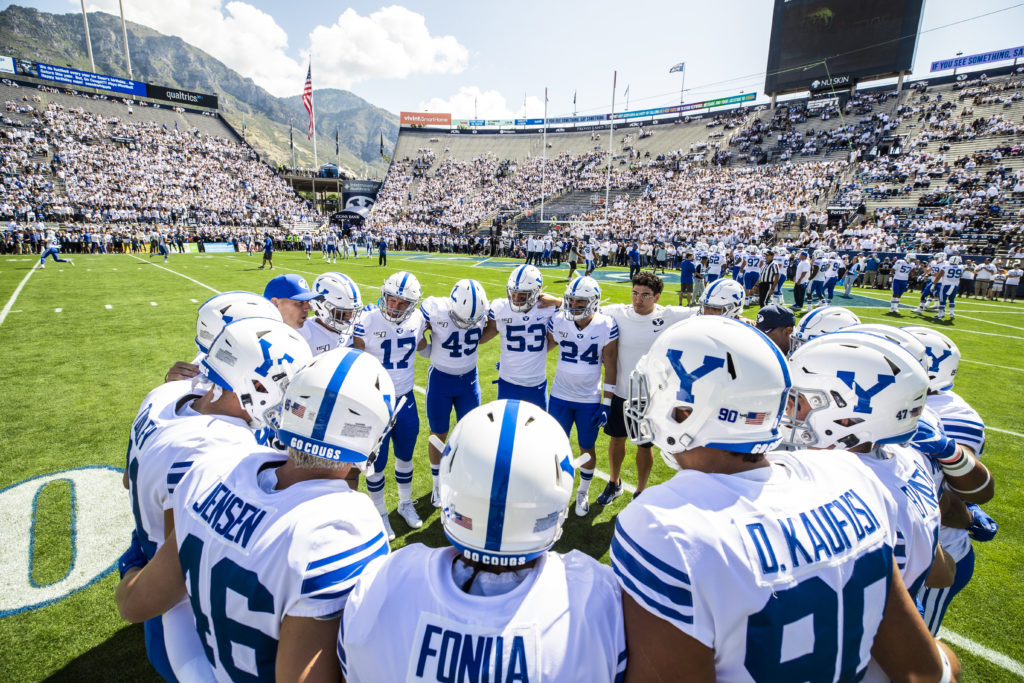
Former BYU quarterback Marc Lyons remembers receiving a special letter from the NCAA in 1969 congratulating him for participating in college football’s 100th year. Lyons and his teammates wore a “100” on their helmets to commemorate the event, and Lyons felt excited to participate in the historic season.
Fifty years later, as the Cougars celebrate Homecoming Week and college football celebrates its 150th anniversary, the Cougar quarterback-turned-broadcaster still loves the sport. However, he knows that the quality of athleticism, rule changes and the influence of BYU’s own LaVell Edwards have fundamentally altered the American pastime.
“Now, at 150 years, it is an entirely different game,” Lyons said.
Spectators on campus for Saturday’s homecoming game would have a hard time recognizing football as it was originally played. Rules were simple and violence was common. Playing with a round ball, players could only score by batting or kicking the ball through the opposing team’s goal. Throwing or carrying the ball was not allowed, but players had plenty of physical contact. The first team to reach six goals won the game.
More than 5.33 million players have played college football since the first game between Princeton and Rutgers on Nov. 6, 1869.
College football begins at BYU
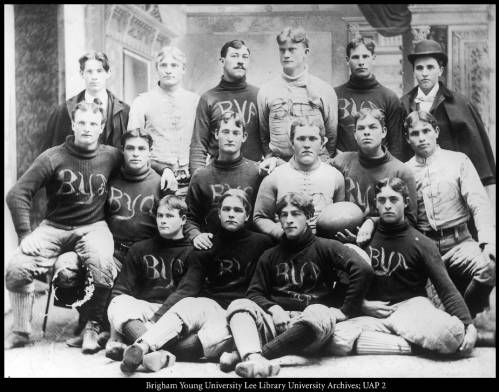
Brigham Young Academy’s 1896 team, the first football team at the school, sits for a photo. Today’s BYU-Utah football rivalry finds roots in BYA’s first football season; BYA defeated Utah 12-0. BYA also played the Elks, the Crescents, the YMCA of Salt Lake City, the Wheel Club of Denver, and Westminster College in 1896.
(L. Tom Perry Special Collections)
BYU — then Brigham Young Academy — entered the college football scene in 1896, 27 years after college football’s official beginning. However, the football program was suspended after just a few seasons as reports of the violence in the sport swirled throughout the nation.
BYU fielded a team again in 1922 after convincing the Board of Trustees that rule changes made the sport safe and a football program would promote better relations with other Utah schools and draw more student athletes to BYU.
Early years of BYU football
BYU football games were not always held in the renowned LaVell Edwards Stadium. In the 1930s, the games were played at the hillside stadium, where the Richards Building now stands.
The stands at the hillside stadium seated 5,000 people, more people seated on temporary bleachers on the west side.
BYU built Cougar Stadium just north of campus with the capacity to seat 33,000 people in 1964. The enthusiasm for BYU football increased as the team won its first conference championship in 1965. Eventually, the stadium expanded to hold 65,000 to meet the increased demand of devoted fans.
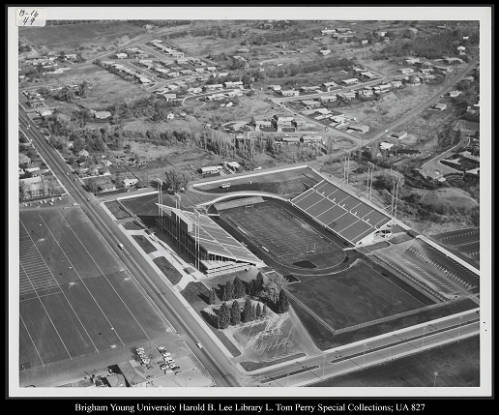
An aerial view of the new Cougar Stadium in 1964 demonstrates BYU football’s high priority to the campus community. Cougar Stadium could originally seat 33,000.
(L. Tom Perry Special Collections)
LaVell Edwards changes the game
Former BYU defensive coordinator LaVell Edwards took over as head coach in 1972. He took a football program that had captured just one conference title in 50 years and turned it into a national powerhouse, forever leaving his mark on BYU and college football.
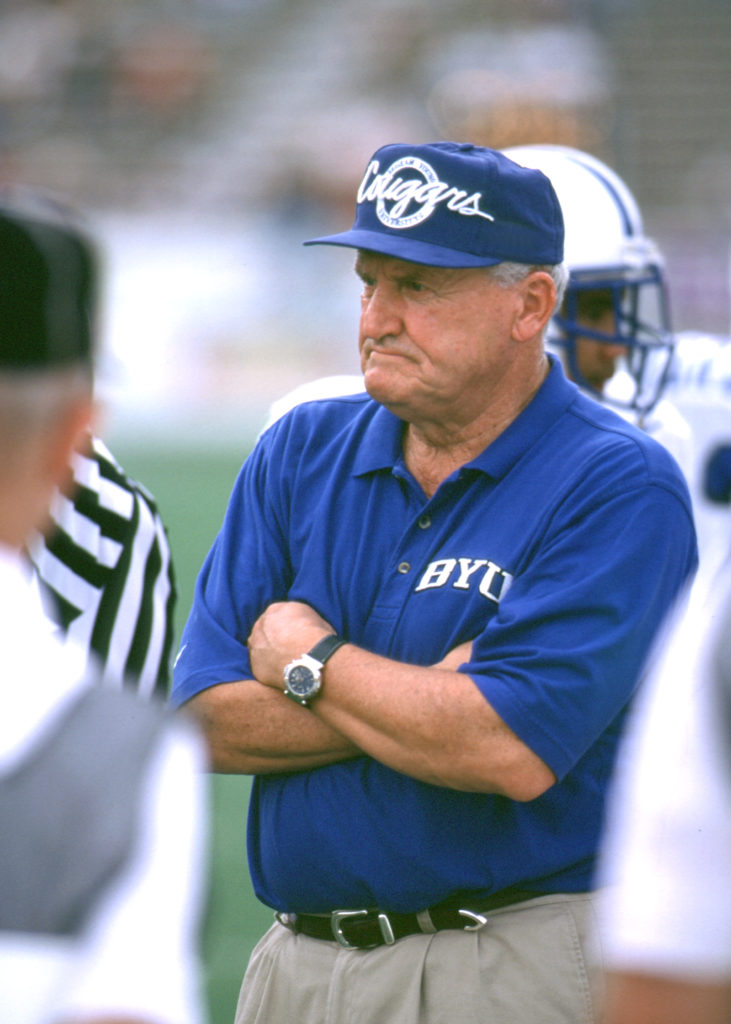
LaVell Edwards coaches the Cougars from the sideline. (Mark Philbrick/BYU Photo)
Edwards said that when he started as head coach, he thought it was a matter of when and not if he would get fired, according to BYU associate athletic director Duff Tittle. Edwards felt that if he was going to get fired, he wanted it to be for trying something different.
The idea to try a different strategy came from working as a defensive coordinator, according to Lyons, who announced Cougar football for nearly four decades. As defensive coordinator, Edwards realized pass plays often converted third downs to firsts.
“He decided that passing was the way to go,” Lyons said.
The Cougars’ embrace of the passing game, also known as the West Coast offense, fundamentally altered college football’s run-dominated offensive strategies.
Quarterbacks with throwing talent flocked to BYU, and Edwards-era teams fielded Cougar legends Gifford Nielsen, Marc Wilson, Jim McMahon, Steve Young, Robbie Bosco and Ty Detmer, among others.
While Edward’s influence on offensive strategy is well-noted, his influence on defensive strategy is sometimes overlooked.
“By putting in that offensive strategy, he ended up creating a problem for himself,” Lyons said. “(He) had to come up with a plan for the defense to stop the things that he had created for the offense.”
In addition to influencing college football nationally, Edwards put BYU on the national radar as a reputable competitor during his 29 seasons as head coach. His 1984 team earned the Cougars their first and only national championship, and his 1990 team beat No. 1 Miami and saw quarterback Ty Detmer take home the Heisman trophy.
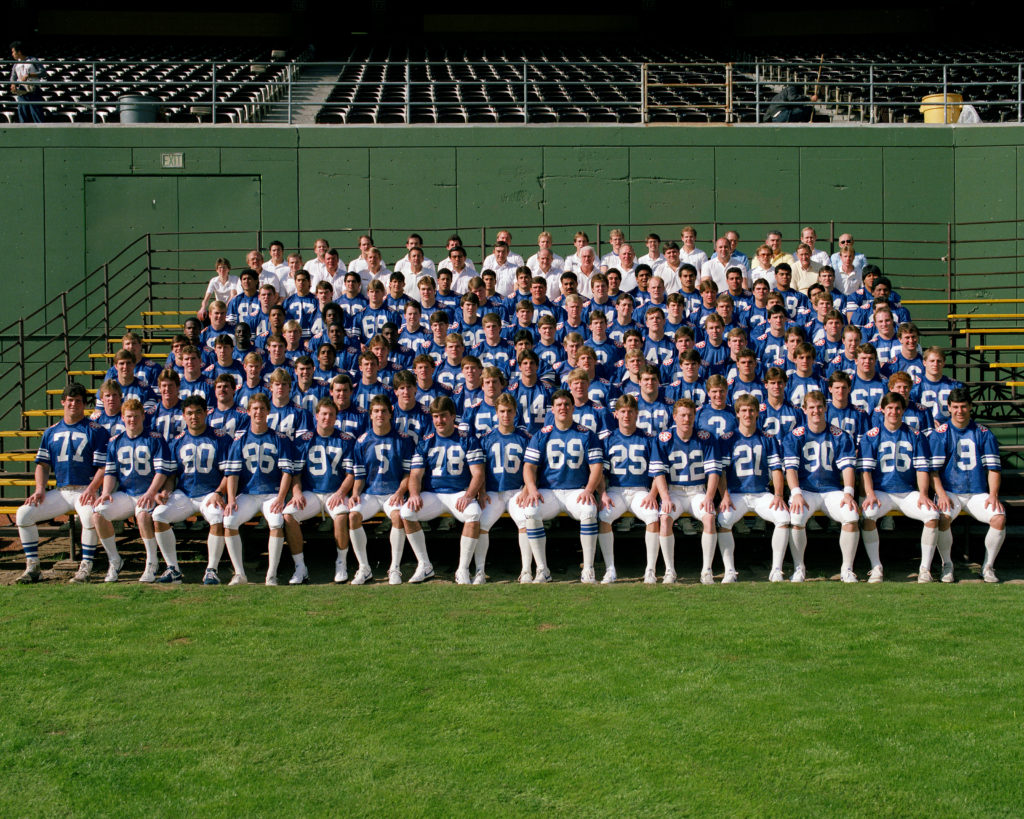
BYU football’s 1984 team earned the Cougars their first and only national championship.
(Mark Philbrick/BYU)
Under Edwards’ coaching, BYU quarterbacks finished first in the nation in passing eight times and picked up 17 other top-five finishes. Cougar quarterbacks also received many other prestigious awards, including seven Sammy Baugh trophies and four Davey O’Brien awards.
Edwards’ coaching legacy became permanently enshrined before Edwards’ final home game as President Gordon B. Hinckley announced Cougar Stadium would be renamed LaVell Edwards Stadium.
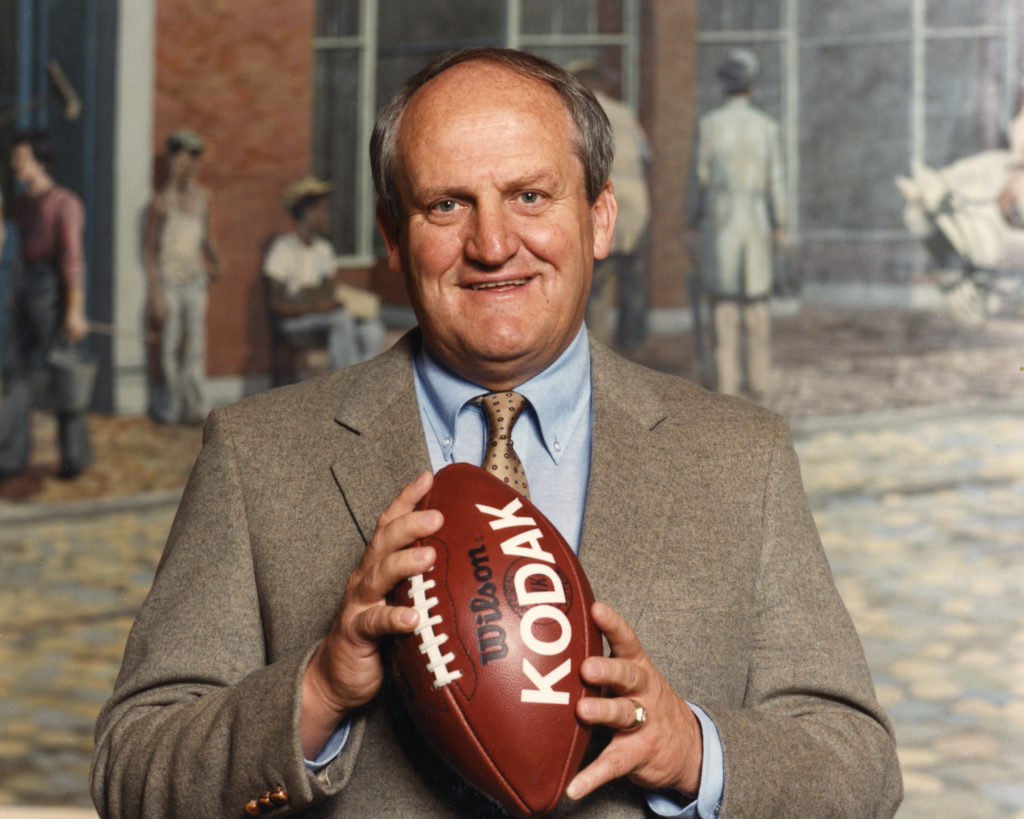
Coach LaVell Edwards receives Kodak Coach of the Year award in 1984. (BYU Athletics) 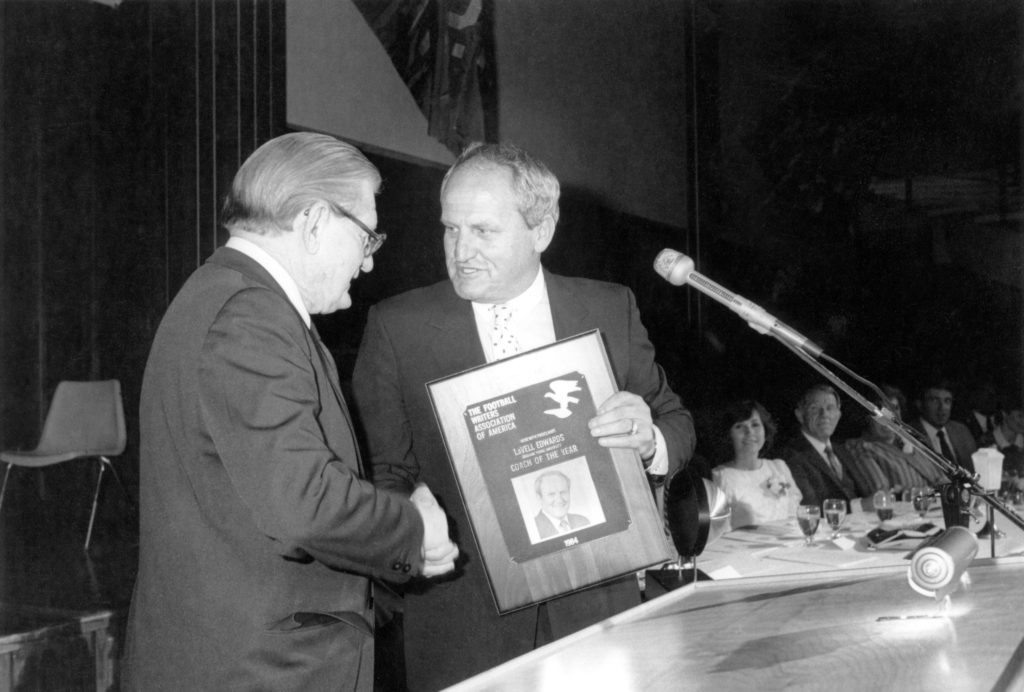
Coach LaVell Edwards receives Coach of the Year award in 1984 from the Football Writers Association of America. (BYU Athletics) 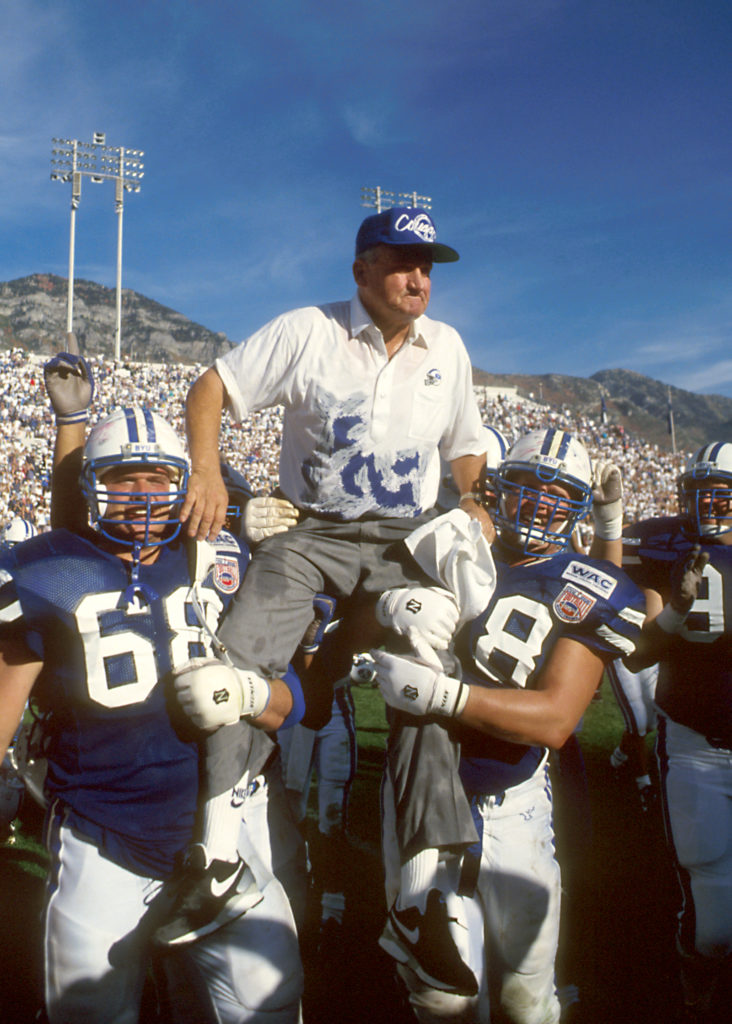
Head coach LaVell Edwards was inducted into the College Football Hall of Fame in 2004. (BYU Athletics)
BYU football after LaVell Edwards
In the post-Edwards era, the football program has seen three coaches: Gary Crowton, Bronco Mendenhall and current head coach Kalani Sitake.

BYU Head Coach Gary Crowton (2001-’04) led the 2001 team to a Mountain West Conference championship and a 12-2 record his first season. The Cougars saw losing records the next three years. (Mark A. Philbrick/BYU Photo)
With the intention of building on BYU’s dominant offense, BYU named Crowton, then the Chicago Bears’ offensive coordinator, as head coach in 2001.
“He brought in a little flash to the football program,” Lyons said. Crowton led the Cougars to a 12-2 finish during his first season as head coach. However, the next three years saw losing seasons.
“He brought in this kind of quick-score attitude, but they weren’t able to create enough of that over the years that he was there,” Lyons said.
In 2005, Mendenhall took over the head coaching operations. Mendenhall, like Edwards, was a defensive coordinator at BYU before being appointed as head coach.
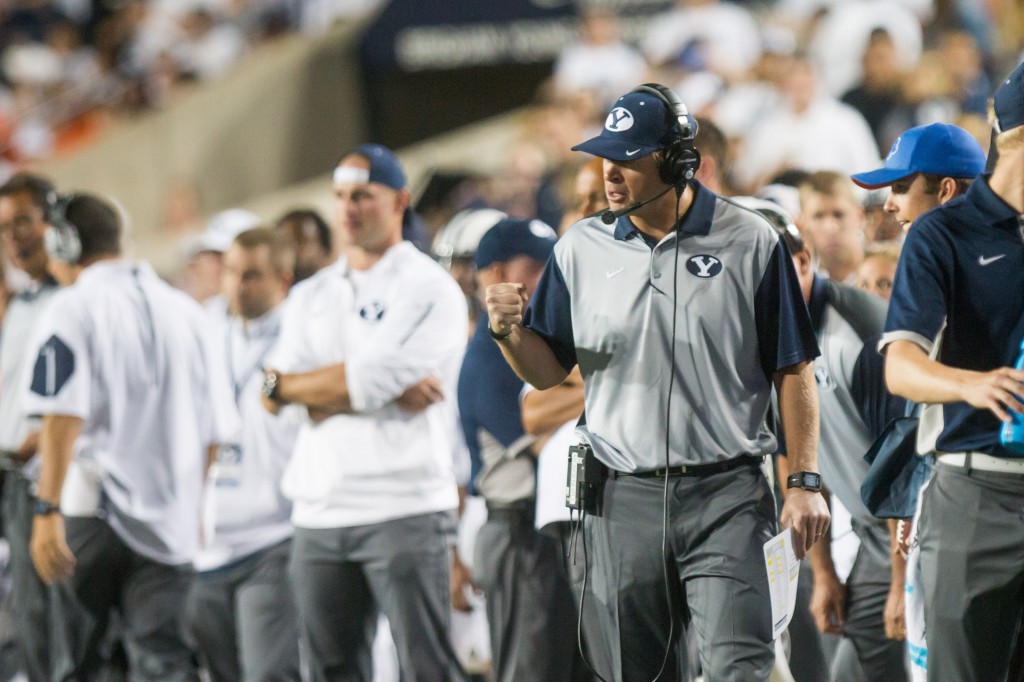
Head Coach Bronco Mendenhall (2005-15) led the Cougars to eleven straight bowl appearances.
The Mendenhall era saw an emphasis on returning to values. Signs with the words “tradition,” “spirit” and “honor” lined the stadium. Firesides the night before games became a tradition. Players learned the importance of faith, family, friends and knowledge — all priorities that, according to Mendenhall, came before football.
Even so, football under Mendenhall did anything but take a back seat.
“He expected more out of players than they knew they could give,” Lyons said.
Relentless demand for improvement earned Mendenhall a 99-43 record during his 11-year tenure as head coach.
Mendenhall also led the team through its transition to conference independence that began in 2011. After five years of guiding an independent team, Mendenhall stepped down from the role to become head coach at the University of Virginia.
Kalani Sitake — an Edwards-coached former Cougar himself — was next to take the helm. Sitake’s hiring made college football history as Sitake became the first Tongan college football head coach.
According to Lyons, Sitake’s coaching style has been similar to Edwards: rely on the assistant coaches to coach the players.
“I don’t know that he has as much input into coaching the individuals,” Lyons said.
The Cougars under Sitake have posted two winning seasons out of Sitake’s three full seasons as coach.
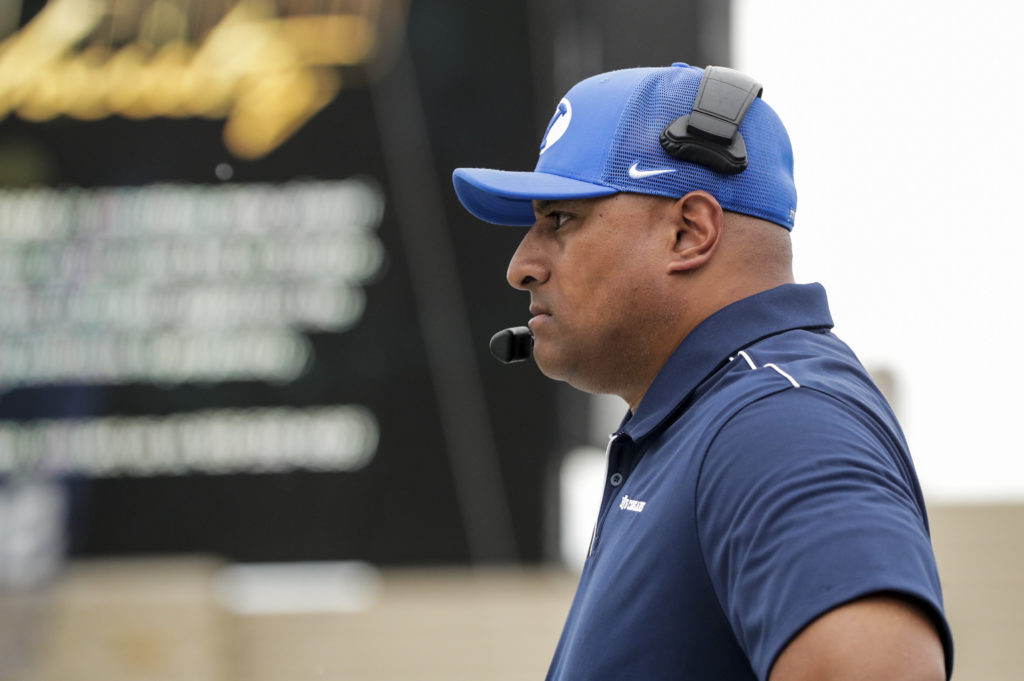
Head Coach Kalani Sitake was coached by BYU football legend LaVell Edwards. (BYU Photo)
Celebrating 150 years
BYU has celebrated college football’s 150th anniversary this year with a special media day as well as in-game festivities, including a retro theme against Washington. Brett Pyne, director of BYU football media relations, said BYU is excited to join schools nationwide in celebrating 150 years of college football.
“There are great traditions and pageantry with this game,” Pyne said. “Everything that goes into a college game, including Cougar Tails and the fight song, are a great way to bring the campus community together.”
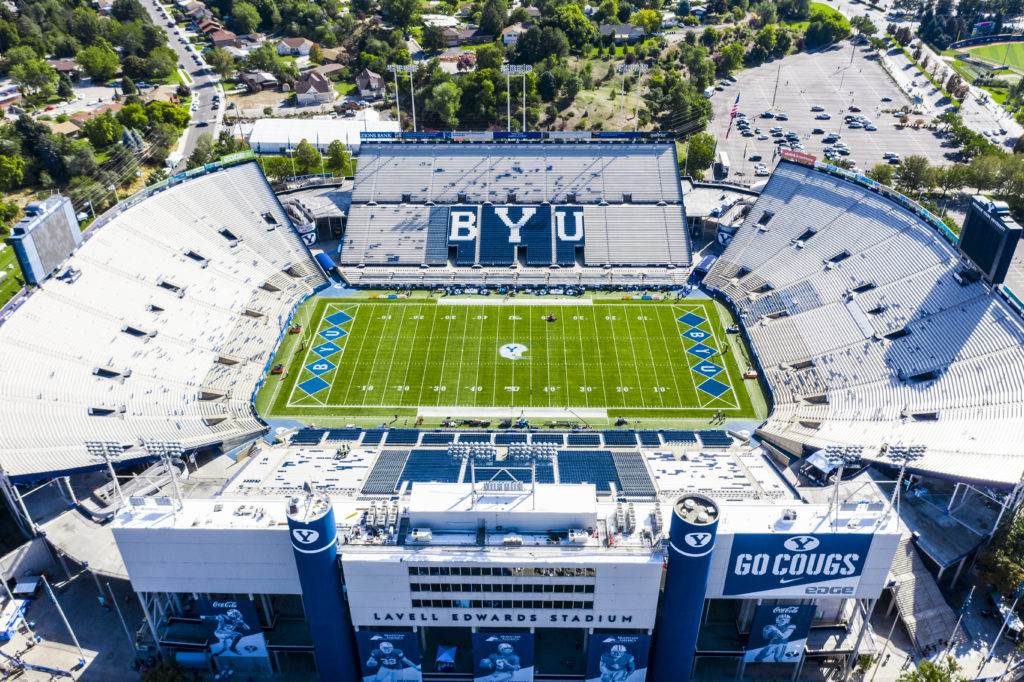
Lavell Edwards Stadium features retro end zone diamond design used in 1960’s to celebrate 150 years of college football in its game against Washington 2019 (BYU Photo) 
BYU wore a special throwback helmet with a single royal blue center stripe used in the 1960s and a design featuring the original block Y logo from the early era of BYU athletics during its game against Washington. (BYU Photo)

